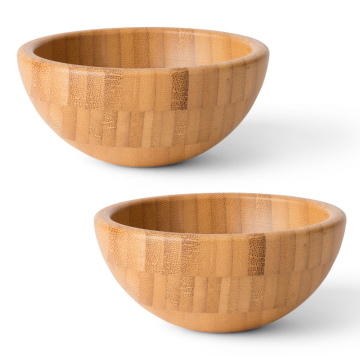A Taste of Home: Exploring the Heartwarming Flavors of Nikujaga
The Origins of Nikujaga
Nikujaga is a culinary traditional Japanese comfort dish that embodies the essence of home-cooked meals within Japanese culture. The origins of nikujaga can be traced back to the Meiji era (1868-1912), a pivotal time when Japan modernized and began to incorporate Western influences into its culinary practices. The name "nikujaga" is derived from two Japanese words: "niku," meaning meat, and "jaga," a colloquial term for potatoes. This dish primarily consists of sliced meat, typically beef, simmered with potatoes, onions, and carrots in a sweet-savory broth made from soy sauce, mirin, and sugar.
Culturally, nikujaga holds a significant place within Japanese households, often considered a quintessential example of “trukari,” the term used to describe food prepared at home. The dish is particularly revered for its simplicity and versatility, allowing families to adapt it based on personal preferences and the seasonal availability of ingredients. Culinary Traditionally cooked by mothers or grandmothers, nikujaga symbolizes care and familial love, serving as a reminder of shared moments around the dining table.
As Japan moved through the 20th century, nikujaga evolved with regional variations and modern interpretations, but its core characteristics have remained largely unchanged. The dish evokes nostalgia, comforting many who grew up enjoying its warmth and rich flavors. It represents the values of home, family, and the importance of preserving culinary traditions. As such, nikujaga transcends mere sustenance; it is a connection to Japan's cultural heritage. Today, families continue to pass down their unique recipes, ensuring that nikujaga retains its significance as a meal that nourishes both the body and soul.
Yummy Ingredients: What Goes into Nikujaga?
Nikujaga, a culinary traditional Japanese comfort dish, derives its heartwarming flavors from a harmonious blend of simple yet essential ingredients. The primary components include tender beef, starchy potatoes, colorful carrots, and sweet onions, all of which contribute to the rich and savory profile of the dish. Ground or sliced beef is often the choice of protein, as it absorbs the accompanying seasonings beautifully, enhancing the overall taste of the meal.
The potatoes play a crucial role in providing substance and texture, as they soften during the cooking process. Their creamy consistency complements the flavors around them, while the carrots add a hint of sweetness and vibrant color, making Nikujaga visually appealing as well. Onions, known for their aromatic qualities, further enrich the dish, adding a layer of depth to the flavor profile. Together, these ingredients create a wholesome meal that embodies the essence of home cooking in Japan.
To achieve the signature taste of Nikujaga, essential seasonings such as soy sauce, mirin, and sugar are utilized. The umami-rich soy sauce elevates the savory quality of the dish, while mirin introduces a subtle sweetness and acidity that balances the flavors. Sugar, often added in moderate quantities, harmonizes the salty notes from the soy sauce, creating a well-rounded taste. These ingredients work synergistically, contributing to the warming and comforting nature of Nikujaga.
Furthermore, regional variations of Nikujaga reflect the adaptability of this dish, as different areas in Japan may introduce seasonal ingredients or personal touches. For instance, one might find variations that incorporate ingredients like mushrooms, green beans, or even different types of meat, showcasing the versatility and enduring popularity of this beloved comfort food. Overall, the thoughtful combination of key ingredients results in a cherished culinary staple that resonates with many.
The Cooking Process: How to Make Authentic Nikujaga
Nikujaga is a culinary traditional Japanese comfort food that embodies simplicity and heartiness, making it a cherished dish in many households. To create nikujaga, begin with the preparation of the essential ingredients: thinly sliced beef, potatoes, carrots, and onions. The balance of these components contributes significantly to the dish's overall flavor. Start by peeling and chopping the potatoes and carrots into bite-sized pieces. Dice the onions to allow their sweetness to meld into the dish. This combination serves as the foundation for the rich, savory broth.
Next, in a medium-sized pot, heat a small amount of oil over medium heat and add the sliced onions. Sauté until they turn translucent, releasing their sweetness. Then, incorporate the beef, stirring until it is browned. This step is crucial as it adds depth to the dish's flavor profile. Once the beef is cooked, add the potatoes and carrots to the pot. Stir to combine all ingredients, allowing them to absorb the flavors already present.
Following this, pour in a mixture of soy sauce, mirin, and dashi stock. The precise ratios may vary according to personal preferences; however, a typical proportion is about two tablespoons of soy sauce and one tablespoon of mirin per cup of dashi. This combination creates a harmonious balance of umami, sweetness, and saltiness. Bring the mixture to a gentle boil, then reduce the heat to a simmer. Cover the pot and let it cook for approximately 20-30 minutes, or until the vegetables are tender. Be sure to check for doneness periodically.
To customize nikujaga to your preference, consider adding other vegetables such as mushrooms or green beans, and adjust the seasoning to suit your taste. Serve the nikujaga in deep bowls, garnished with a sprinkle of scallions for an extra burst of flavor. Enjoy this warming dish with rice for a complete meal that captures the heart of home-cooked Japanese cuisine.
Nikujaga Around the World: Global Adaptations and Influence
Nikujaga, a culinary traditional Japanese comfort dish, has transcended its domestic origins, inspiring culinary interpretations across the globe. While the core elements of nikujaga consist of sliced beef, potatoes, and onions simmered in a sweet and savory sauce, international adaptations frequently incorporate local ingredients and cooking methods, demonstrating a diverse array of flavors and textures. In countries such as South Korea, similar stews may utilize kimchi or tofu, blending the essence of nikujaga with the unique taste profiles of Korean cuisine. The inclusion of gochujang, a fermented chili paste, showcases how regional flavors can be harmoniously integrated into this classic dish.
In the United States, where diverse culinary practices coexist, nikujaga inspired by home-cooked comfort food often features additional vegetables, ranging from carrots to bell peppers, enhancing nutritional value. Local adaptations also reflect dietary preferences and availability of ingredients. For instance, a vegetarian version may replace meat with seitan or mushrooms, making nikujaga accessible to a broader audience. This adaptability signifies how cultural exchange and fusion are prevalent in contemporary dining, illustrating the dish's versatility beyond its Japanese roots.
The global interpretations of nikujaga are not merely about altering ingredients; they embody a broader narrative of connection and community. Food has long served as a vehicle for cultural exchange, and nikujaga exemplifies how such exchanges can lead to enriching culinary diversity. Cookouts, potlucks, and shared dining culinary experiences have fostered appreciation for different versions of nikujaga, uniting people through a shared love of food. By adapting and personalizing this beloved dish, individuals create a melting pot of flavors and stories that reflect their unique backgrounds and cultural identities.











